In recent years, the commercial toastie maker market has experienced a surge in popularity, driven by the growing demand for convenient and delicious toasted sandwiches. As this trend continues to gain momentum, it’s essential to delve into the intricacies of the market, from the key players shaping it to the innovations driving its growth. With a focus on Europe and America, this exploration aims to uncover the market dynamics, consumer insights, and the future trajectory of commercial toastie makers.
The Growing Demand for Toastie Makers
In recent years, there’s been a palpable surge in the popularity of toastie makers, a trend that has swept through both European and American markets with remarkable fervor. This sudden interest in these compact, versatile appliances can be attributed to several factors that have collectively fueled a growing demand.
One of the primary drivers is the shift towards convenience. With busy lifestyles and the rise of the on-the-go culture, consumers are increasingly seeking quick and easy meal solutions. Toastie makers offer a perfect solution for those who want a warm, comforting snack or meal without the hassle of cooking. The ease of operation and the quick preparation time have made them a staple in many households and commercial kitchens alike.
Moreover, the health and wellness movement has played a significant role in the popularity of toastie makers. As people become more conscious of their dietary choices, they’re looking for alternatives to traditional fast food options. Toasties, with their customizable fillings and the ability to use whole-grain bread, can be a healthier choice compared to other snack alternatives. This health-conscious approach has attracted a new demographic of consumers who are eager to incorporate these appliances into their daily routines.
Cultural influences have also had a hand in the demand for toastie makers. The popularity of British cuisine, with its love for toasted sandwiches, has sparked an interest in these appliances across the pond. American consumers, in particular, have been captivated by the charm and simplicity of the toastie, leading to a surge in sales. The nostalgia factor doesn’t hurt either; many people find comfort in the familiar taste and texture of a freshly toasted sandwich.
The versatility of toastie makers is another key factor. These appliances can prepare a wide range of dishes, from simple cheese and ham sandwiches to gourmet options with avocado, smoked salmon, and capers. The ability to create a variety of meals and snacks in one appliance has made it a must-have for many consumers looking to diversify their kitchen repertoire.
In the commercial sector, the demand for toastie makers has been particularly robust. cafes, delis, and fast-casual restaurants have embraced these appliances as a way to offer a quick, affordable, and customizable menu item. The compact size of the machines makes them ideal for limited kitchen spaces, and their durability ensures they can withstand the rigors of a busy commercial kitchen.
The rise of social media has also played a role in the growing demand for toastie makers. Influencers and food bloggers have been showcasing creative toastie recipes and the ease of making them, which has inspired many to purchase their own appliances. The visual appeal of a beautifully presented toastie, often accompanied by a cup of tea or coffee, has become a sought-after Instagrammable moment.
From a technological standpoint, advancements in the design and functionality of toastie makers have made them even more appealing. Modern models come with features like adjustable toasting settings, non-stick surfaces, and even programmable options for different types of bread. These innovations have not only improved the user experience but have also extended the life of the appliances.
In conclusion, the growing demand for toastie makers is a multifaceted phenomenon that reflects broader trends in consumer behavior. From convenience and health consciousness to cultural influences and technological advancements, these appliances have captured the imagination of consumers across the globe. As the market continues to expand, it’s clear that the toastie maker is not just a trend but a staple in the modern kitchen.
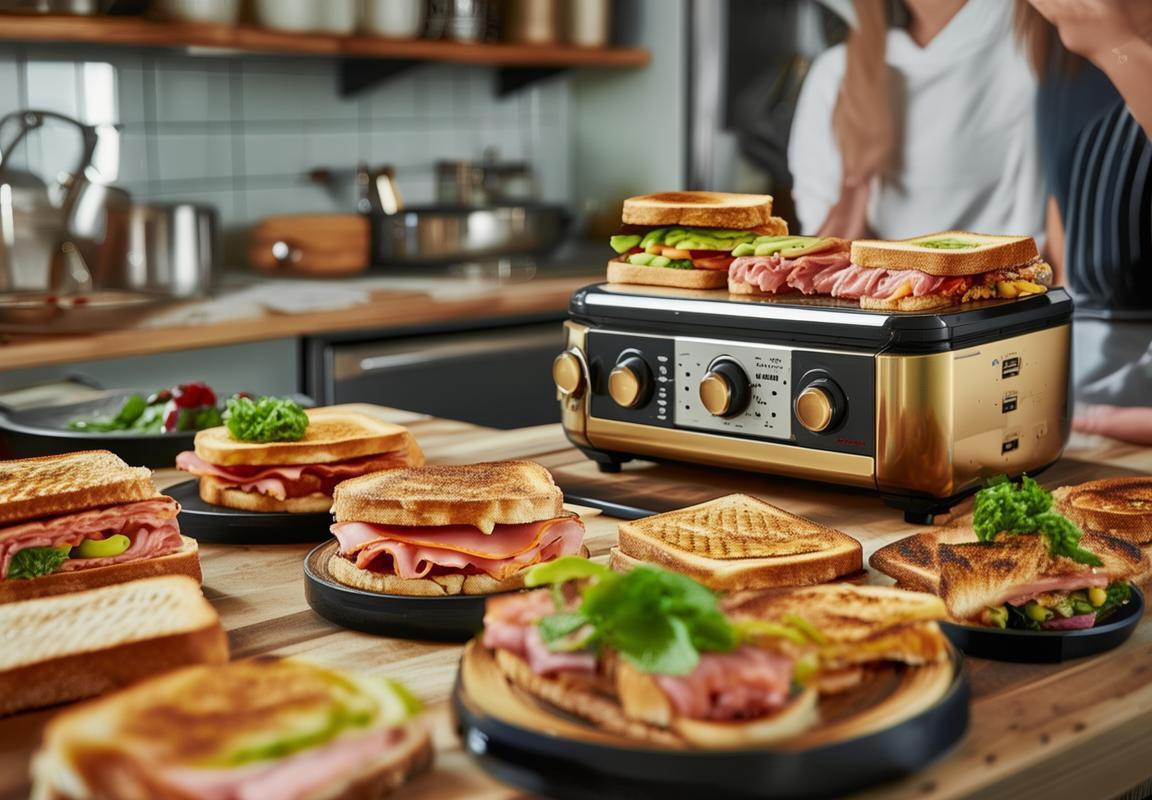
Key Players in the Market
In the bustling world of commercial toastie makers, several key players have emerged as industry leaders, each bringing their unique touch to the market. From cutting-edge technology to timeless design, these companies are not just suppliers; they are innovators shaping the future of toastie production.
1. BrevilleBreville, an Australian brand known for its high-quality kitchen appliances, has made a significant mark in the commercial toastie maker market. Their sleek and durable machines are favored for their consistent performance and ability to handle high-volume production. Breville’s commitment to innovation is evident in their latest models, which feature advanced heating elements and adjustable browning settings.
2. SunbeamSunbeam, a household name in the appliance industry, has a strong presence in the commercial toastie maker segment. Their machines are known for their reliability and ease of use. Sunbeam’s range includes countertop models suitable for cafes and delis, as well as larger, commercial-grade units perfect for busy restaurants and bakeries. The brand’s reputation for affordability makes it a go-to choice for many small businesses.
3. GourmetGourmet has established itself as a premium player in the commercial toastie maker market. Their machines are renowned for their precision and durability, catering to high-end cafes and restaurants. Gourmet’s product line includes a variety of toastie makers, from manual to fully automated models, each designed with the professional chef in mind. The brand’s focus on customizability allows for seamless integration into various kitchen setups.
4. Hamilton BeachHamilton Beach, with its extensive portfolio of kitchen appliances, offers a range of commercial toastie makers that balance quality with affordability. Their machines are well-suited for both small-scale operations and larger establishments. Hamilton Beach’s commitment to customer satisfaction is reflected in their user-friendly designs and comprehensive warranty programs.
5. DelonghiItalian brand Delonghi has brought a touch of European elegance to the commercial toastie maker market. Known for their stylish and functional appliances, Delonghi’s toastie makers are a favorite among consumers and professionals alike. The brand’s commitment to energy efficiency and ease of maintenance has made their products a staple in many commercial kitchens.
6. Russell HobbsRussell Hobbs, another British brand, has made a name for itself with its commercial toastie makers that combine classic design with modern technology. Their machines are known for their robust construction and ability to produce a perfect toastie every time. Russell Hobbs’ focus on safety features and ease of cleaning has earned them a loyal customer base.
7. CuisinartCuisinart, a leader in kitchen appliances, offers a range of commercial toastie makers that cater to a wide array of needs. From compact countertop models to larger, countertop conveyor systems, Cuisinart’s product line is designed to meet the demands of busy kitchens. The brand’s reputation for durability and performance has made it a trusted choice among chefs and restaurant owners.
8. West BendWest Bend has been a staple in the commercial appliance market for decades. Their toastie makers are known for their sturdy build and consistent performance. West Bend’s commitment to American craftsmanship is evident in their machines, which are designed to withstand the rigors of daily commercial use.
9. NuWaveNuWave has revolutionized the commercial toastie maker market with their innovative technology. Their countertop units are equipped with advanced features like digital controls and programmable settings, allowing for precise toastie production. NuWave’s focus on energy efficiency and ease of operation has made their products a favorite among eco-conscious consumers and businesses.
10. BaxiBaxi, a British brand, offers a range of commercial toastie makers that are both stylish and functional. Their machines are designed to meet the demands of high-volume production, with features like rapid heat-up times and adjustable browning controls. Baxi’s commitment to quality and reliability has made them a preferred supplier for many commercial kitchens in the UK and beyond.
These key players in the commercial toastie maker market are not just suppliers; they are the heartbeat of a thriving industry. With their diverse offerings and unwavering commitment to quality, they continue to drive innovation and meet the evolving needs of consumers and businesses alike.
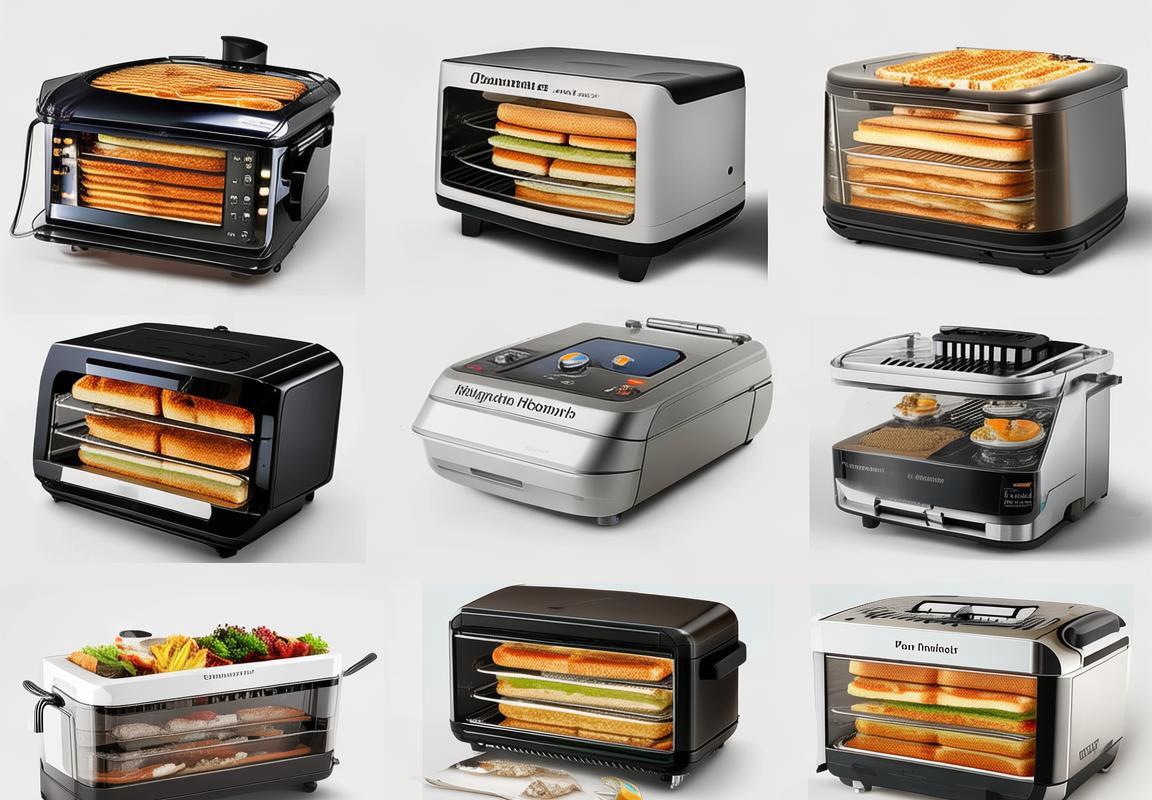
Innovations in Toastie Technology
The evolution of toastie technology has been nothing short of remarkable, with manufacturers continuously pushing the boundaries to deliver products that not only toast bread to perfection but also incorporate innovative features that enhance convenience, efficiency, and even health. Here’s a look at some of the standout innovations in the world of commercial toastie makers.
Bread Sensing TechnologyOne of the most recent advancements is the introduction of bread sensing technology. These smart toasteries can detect the size of the bread being inserted, automatically adjusting the toasting time and heat level to ensure each slice is toasted to the desired crispness, whether it’s a standard loaf or a thin baguette.
Variable Toasting SettingsGone are the days of one-size-fits-all toasting. Modern toastie makers now offer a range of settings that cater to different types of bread and personal preferences. From light to dark, from frozen to defrost, these settings give users complete control over the final product, whether they’re making a simple sandwich or a gourmet toastie.
Integrated Breakfast PlattersIn the quest for convenience, some manufacturers have combined the toastie maker with other kitchen appliances. For instance, you might find a unit that doubles as a sandwich press or even a mini oven, allowing users to prepare a complete breakfast platter with a single device.
Programmable TimersFor those looking to save time, programmable timers are a game-changer. These features allow users to set a specific time for toasting, so they can start their day with freshly toasted bread without waiting for it to finish. This is particularly useful in busy commercial settings like cafes and delis.
Anti-Jam TechnologyNo one enjoys the frustration of a stuck toaster, but anti-jam technology has made that a rarity. By using a combination of sensors and a unique design, these toasters can detect when bread is jammed and automatically stop the toasting process, preventing potential fires and accidents.
Eco-Friendly ToastingWith environmental concerns on the rise, some manufacturers have developed eco-friendly toastie makers. These models use less energy and may be made from recycled materials, appealing to businesses looking to reduce their carbon footprint.
Touchscreen InterfacesFor a sleek and modern look, many commercial toastie makers now feature touchscreen interfaces. These interfaces offer a more intuitive way to control the toaster, allowing users to easily navigate through different settings and even save favorite toasting profiles.
Bread Preserver FunctionA novel feature in some models is the bread preserver function, which keeps the bread warm and soft while it’s not being toasted. This is especially useful for keeping sandwiches or toasties warm until the entire order is ready to be served.
Self-Cleaning CapabilitiesMaintenance is always a concern, and some advanced toastie makers come with self-cleaning functions. These units can reduce the need for manual cleaning, saving time and effort for busy kitchens.
LED LightingFor better visibility, some models now incorporate LED lighting that illuminates the toasting area. This ensures that the bread is evenly toasted and makes it easier to see the toasting process.
Smart ConnectivityIn an era where everything is getting connected, some toastie makers now offer smart connectivity features. They can be controlled via a smartphone app, allowing for remote toasting and even updates on the latest toasting innovations.
These innovations are a testament to the creativity and commitment of manufacturers to provide the best possible product to their customers. As technology continues to advance, we can expect even more sophisticated features that will make the toastie maker an essential appliance in kitchens around the globe.
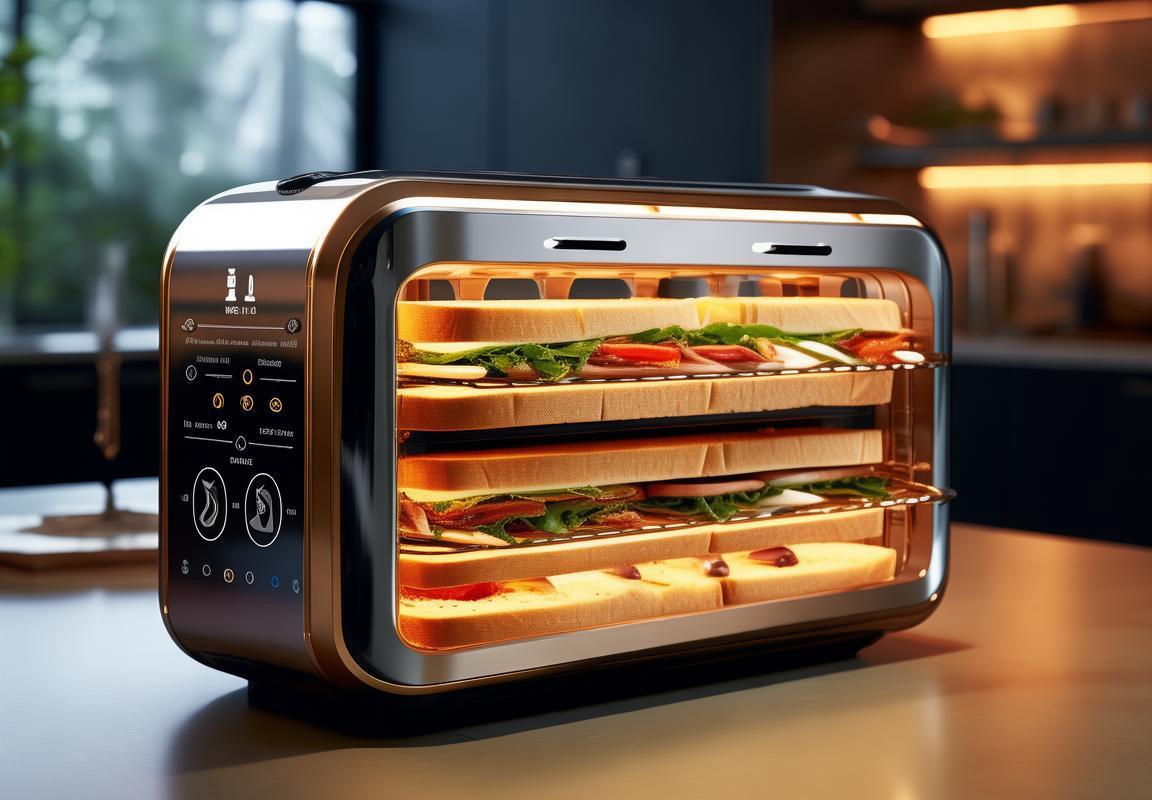
Market Dynamics in Europe
The European market for commercial toastie makers has seen a surge in demand, driven by a combination of nostalgia for classic British and European comfort food, along with the rise of modern fast-casual dining concepts. This dynamic landscape is characterized by several key trends:
In the UK, toasties have always held a special place in the hearts of the public, and this affection has translated into a thriving market for commercial toastie makers. The preference for hearty sandwiches with a crispy, golden-brown toastie crust is undeniable, leading brands like Gialappa to innovate and offer models that cater to high-volume restaurants and cafes.
Germany, with its love for all things culinary, has seen toastie machines become a staple in many cafes and bakeries. The demand isn’t just for traditional toasties but for those with a modern twist. Suppliers like Rösle have responded by introducing models that offer adjustable browning settings, ensuring that every slice is perfect for the discerning German palate.
France, known for its gourmet cuisine, has a market for toastie makers that reflects a blend of tradition and innovation. While the classic French onion soup toastie remains popular, there’s also a growing interest in artisanal bread and unique fillings. Brands like Magimix have managed to capture this market by offering premium toastie makers that can handle a variety of bread types and temperatures.
Italy’s contribution to the European toastie market is a testament to the country’s love for simplicity and flavor. Toastie makers in Italy are often sought for their ability to create a perfect open-faced sandwich, perfect for a quick yet satisfying meal. Brands like Breville have found success by focusing on ease of use and the ability to produce a crispy texture that Italian diners appreciate.
Scandinavian countries have a unique take on the toastie market, with a preference for minimalistic design and efficient appliances. The focus is on sustainability and energy efficiency, leading to a market where brands like Electrolux excel with their sleek and eco-friendly toastie makers.
Spain, known for its tapas culture, has seen toastie makers become a part of the fast-casual dining scene. Here, the toastie is not just a sandwich but a portable dish that can be enjoyed on the go. Brands like Kenwood have capitalized on this by offering portable and easy-to-clean models that are perfect for street food vendors and food trucks.
In Eastern Europe, there’s a blend of tradition and modernity in the toastie market. Countries like Poland, Hungary, and the Czech Republic have seen a rise in the demand for toastie makers that can cater to both traditional fillings and contemporary flavors. Suppliers like DeLonghi have adapted by offering versatile models that can handle a wide range of ingredients and temperatures.
The European market for commercial toastie makers is also influenced by the health and wellness trends that are sweeping across the continent. Consumers are looking for healthier alternatives to fast food, and toasties have stepped into this void with fillings like avocado, smoked salmon, and vegetables. This has led to an increased demand for machines that can accommodate whole-grain breads and lower-temperature settings.
Moreover, the market is seeing a rise in digital and smart features in toastie makers. Touchscreen interfaces, programmable settings, and even Wi-Fi connectivity for remote control are becoming standard in many new models. This technological advancement is not only enhancing the user experience but also opening up new opportunities for businesses to offer personalized and premium toastie options.
As the European market for commercial toastie makers continues to grow, suppliers are focusing on innovation, sustainability, and health-conscious features to stay ahead. The dynamic nature of this market means that anything from changes in consumer preferences to new entrants in the market can lead to significant shifts in the competitive landscape. Only those who are able to adapt and offer value will truly thrive in this evolving environment.
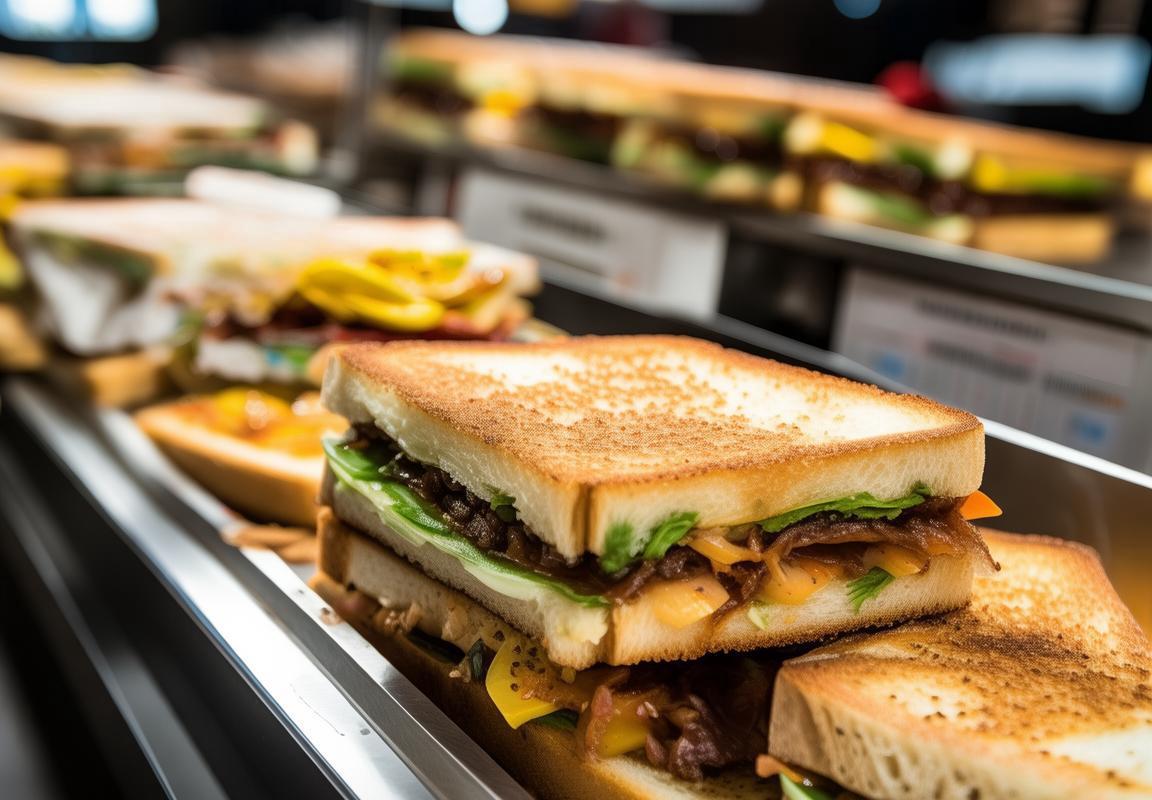
Market Dynamics in America
In the heart of America, the market for kitchen appliances, including toastie makers, is undergoing a transformation. From bustling cafes to cozy homes, the dynamics of this market are shaped by a mix of cultural shifts, technological advancements, and consumer preferences.
The American toastie market has seen a rise in demand for both commercial and residential models. This surge can be attributed to the growing popularity of European-style snacks and the convenience factor these appliances offer. The trend of quick and easy meals has bolstered the sales of toastie makers, as they fit perfectly into the fast-paced lifestyle that many Americans lead.
Cafes and bakeries have embraced toastie makers as a way to differentiate their offerings and appeal to a wide audience. From gourmet sandwiches to artisanal open-face toasties, these establishments are experimenting with a variety of fillings and bread choices. The result is a dynamic market where innovation is key to staying competitive.
Health consciousness is another driving force in the American market. Consumers are increasingly looking for healthier alternatives to traditional fast food, and toastie makers provide a platform for creating nutritious and customizable meals. The ability to toast whole-grain breads and incorporate fresh ingredients has made toasties a go-to option for those looking to make healthier choices.
Technological advancements have also played a significant role in shaping the market dynamics. Modern toastie makers come with features like adjustable heat settings, non-stick surfaces, and even dual slots for making two sandwiches at once. These innovations cater to the needs of busy households and commercial kitchens alike, offering more control over the cooking process.
The market is also witnessing a shift towards eco-friendly appliances. As consumers become more environmentally aware, there’s a growing preference for appliances that are energy-efficient and made with sustainable materials. This has led to an increase in the sales of appliances that not only perform well but also align with consumers’ values.
In terms of pricing, the American market offers a wide range of options, from budget-friendly models to high-end, premium toastie makers. This diversity caters to different consumer segments, from cost-conscious shoppers to those who are willing to invest in quality and longevity.
Another interesting aspect of the American market is the influence of social media and influencer culture. The way products are presented and reviewed on platforms like Instagram and YouTube can significantly impact consumer purchasing decisions. Brands that leverage this trend effectively can gain a competitive edge in the market.
Additionally, the rise of home delivery services has opened up new opportunities for toastie makers. As more people opt for home meals, there’s a demand for appliances that can easily handle batch cooking and meal prep. Toastie makers are stepping into this space, offering a solution that combines convenience with the joy of homemade food.
Despite these positive trends, the market isn’t without its challenges. The competition is fierce, with a multitude of brands vying for consumer attention. Brands must stay on top of consumer trends, invest in marketing, and consistently deliver high-quality products to succeed.
In conclusion, the American market for toastie makers is dynamic, driven by a combination of cultural shifts, technological innovations, and consumer needs. As the market continues to evolve, it will be fascinating to see how toastie makers adapt to new challenges and opportunities, solidifying their place in American kitchens and cafes.
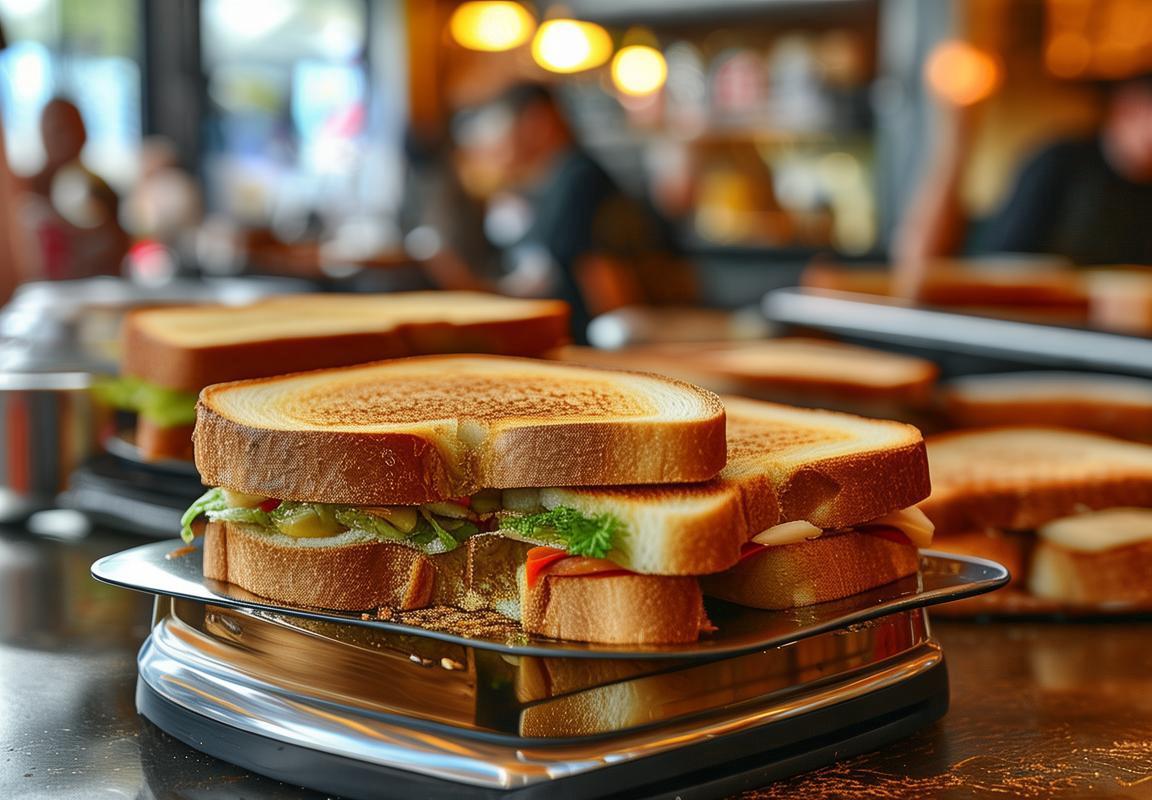
Data-Driven Insights
In recent years, the kitchen appliance industry has seen a surge in data-driven insights, offering a clearer picture of market trends and consumer behavior. Here’s a glimpse into the key data points shaping the landscape:
Consumer Preferences ShiftThe data reflects a notable shift in consumer preferences, with a growing number of consumers opting for healthier, more efficient appliances. This trend is particularly pronounced in urban areas, where busy lifestyles and health consciousness are on the rise.
Market Size and GrowthStatistical data reveals a significant increase in the market size for kitchen appliances, with sales figures showing a consistent upward trend over the past decade. The growth is attributed to factors such as urbanization, rising disposable incomes, and the increasing importance of convenience.
Product Usage PatternsInsights into product usage patterns show that consumers are using appliances more frequently and diversely. For instance, smart ovens and air fryers have seen a surge in usage, as consumers seek to reduce cooking times and incorporate healthier cooking methods into their routines.
Digital ConnectivityThe integration of digital technology in kitchen appliances has become a key driver of innovation. Data indicates that a significant portion of consumers are interested in appliances that offer connectivity, allowing them to control and monitor their devices remotely via smartphone apps.
Brand Loyalty and TrustBrand loyalty remains a crucial factor in the kitchen appliance market. Data reveals that consumers are more likely to purchase products from brands they trust, with a preference for established names that offer reliability and quality.
E-commerce InfluenceThe rise of e-commerce has had a substantial impact on the kitchen appliance market. Online sales have seen a dramatic increase, with consumers turning to online platforms for convenience and competitive pricing. Data shows that a significant percentage of purchases are now made online.
Sustainability and Energy EfficiencyConsumers are increasingly concerned about sustainability and energy efficiency. Data indicates a growing preference for appliances that are eco-friendly and energy-saving, with certifications like Energy Star becoming more prominent in consumer decision-making.
Product Returns and WarrantiesData also highlights the importance of product returns and warranties. A higher rate of returns for certain appliances suggests potential quality issues or unmet consumer expectations. Conversely, strong warranty programs can enhance customer satisfaction and loyalty.
Globalization TrendsThe kitchen appliance market is becoming more globalized, with international brands gaining a stronger foothold in various regions. Data shows that consumers are increasingly open to foreign brands, leading to a more diverse marketplace.
Consumer Education and ReviewsThe role of consumer education and reviews cannot be overstated. Data indicates that consumers are heavily influenced by online reviews and educational content, which can shape their perceptions and purchase decisions.
In conclusion, the data-driven insights into the kitchen appliance market provide valuable information for manufacturers, retailers, and consumers alike. By understanding these trends, stakeholders can better anticipate market changes and meet the evolving demands of consumers.

Challenges and Opportunities
In the competitive landscape of commercial toastie makers, suppliers face a myriad of challenges and opportunities that shape their strategies and market positioning. Navigating these complexities is crucial for long-term success.
Battling Counterfeit ProductsThe rise of counterfeit goods has been a significant challenge for legitimate toastie maker suppliers. These fake products not only dilute the market but also undermine the reputation of established brands. Suppliers must invest in robust quality control measures and anti-counterfeiting technologies to protect their market share and customer trust.
Adapting to Health Conscious ConsumersAs health awareness grows, consumers are increasingly seeking healthier alternatives. Toastie makers must innovate to offer models that can accommodate whole-grain breads, reduced-fat spreads, and healthier cooking options. This shift requires suppliers to balance convenience with health, appealing to a more discerning consumer base.
Regulatory ComplianceNavigating the complex web of international and local regulations is a constant challenge. From safety standards to emissions guidelines, suppliers must ensure that their products meet all legal requirements. Compliance often involves additional costs and time, but it is essential for maintaining a good standing in the market.
Evolving Retail ChannelsThe retail landscape is changing rapidly, with e-commerce gaining momentum. Toastie maker suppliers must adapt by optimizing their online presence and distribution channels. This includes ensuring that products are easily accessible online, as well as managing inventory and logistics to meet the demands of a digital marketplace.
Technological IntegrationThe integration of technology into kitchen appliances is a trend that’s not slowing down. Suppliers need to keep pace with advancements like smart connectivity, which allows toastie makers to be controlled remotely or integrated into home automation systems. This technological leap not only enhances user experience but also opens up new markets for innovative features.
Sustainability ConcernsConsumers are increasingly concerned about the environmental impact of their purchases. Suppliers must respond by offering sustainable products, such as those made from recycled materials or designed for longevity. Investing in sustainable practices also helps brands build a positive image and attract eco-conscious consumers.
Competitive Pricing StrategiesMaintaining competitive pricing while ensuring profitability is a delicate balance. Suppliers must monitor market trends, analyze competitor pricing, and find ways to innovate without inflating costs. This could involve sourcing materials more efficiently, streamlining production processes, or offering value-added services.
Expansion into New MarketsThere are untapped markets around the world, particularly in emerging economies. Suppliers with a global perspective can find opportunities to expand their reach. This involves understanding local preferences, adapting products to local regulations, and building partnerships with local distributors and retailers.
Innovation in Design and FunctionalityDesign and functionality are key differentiators in the toastie maker market. Suppliers that invest in research and development to create unique designs and innovative features can capture the attention of consumers looking for something new and exciting. This could include customizable settings, advanced heating elements, or even eco-friendly designs.
Marketing and Branding EffortsEffective marketing and branding are crucial for standing out in a crowded market. Suppliers must develop compelling marketing campaigns that highlight the unique selling points of their products. This could involve influencer partnerships, social media engagement, or targeted advertising in key markets.
By addressing these challenges and capitalizing on these opportunities, suppliers can not only survive but thrive in the dynamic commercial toastie maker market. It’s a landscape where adaptability, innovation, and a customer-centric approach are the keys to success.

Consumer Insights
The world of consumer insights in the commercial toastie maker market is as diverse as the tastes and preferences of the end-users. Understanding these insights is crucial for suppliers to tailor their products and marketing strategies accordingly. Here’s a glimpse into the key consumer behaviors and preferences shaping the market:
-
Convenience at its CoreConsumers today are seeking convenience in every aspect of their lives, and the commercial toastie maker market is no exception. The ability to quickly and easily prepare a delicious, toasted sandwich is a major draw for busy professionals, families, and anyone looking to save time on breakfast or lunch.
-
Health and Wellness FocusWith health trends on the rise, consumers are increasingly interested in toastie makers that offer healthier options. This includes units that can bake with whole-grain breads, low-fat spreads, and the ability to control cooking temperatures to avoid excessive fat and calorie content.
-
Versatility andConsumers are not just looking for a single-purpose toastie maker; they want a versatile appliance that can cater to various recipes and preferences. This means features like adjustable browning settings, multi-slice capabilities, and even options for grilling or toasting other types of bread and snacks.
-
Design and StyleThe aesthetic appeal of a commercial toastie maker is also a significant factor for many consumers. Modern, sleek designs that complement kitchen decor and a range of colors and finishes are increasingly sought after. The visual appeal can influence purchase decisions, especially in cafes and restaurants where the appliance is a visible part of the dining experience.
-
Smart Technology IntegrationAs technology becomes more integrated into everyday life, consumers are eager to see it in their kitchen appliances. Smart features like Bluetooth connectivity, app controls, and pre-programmed settings are becoming more popular, as they offer convenience and the ability to customize toastie-making experiences.
-
Price SensitivityWhile consumers are willing to invest in a quality toastie maker, they also look for value for money. This means finding the right balance between price, quality, and features. Budget-friendly options with essential functionalities often find a place in homes and commercial kitchens alike.
-
Brand Trust and ReputationBrand reputation plays a significant role in consumer decision-making. Established brands with a track record of producing reliable and durable appliances are more likely to be trusted by consumers. Word-of-mouth and online reviews are crucial in building brand trust and influencing purchasing choices.
-
Sustainability and Environmental ConsiderationsConsumers are increasingly conscious of the environmental impact of their purchases. Eco-friendly features, such as energy-efficient designs and recyclable materials, are becoming more attractive. Suppliers that address sustainability concerns can gain a competitive edge.
-
Customization and PersonalizationThe ability to customize and personalize toastie making is a growing trend. Consumers appreciate the option to add their own touches, whether it’s selecting the type of bread, spreads, or even creating their own recipes that the appliance can execute.
-
Safety FeaturesSafety is always a top priority. Features like automatic shut-off, child safety locks, and non-slip bases are essential for peace of mind, especially in commercial settings where multiple people may use the appliance.
Understanding these consumer insights allows suppliers to develop products that not only meet but exceed expectations, fostering customer loyalty and driving market growth. By staying attuned to these trends, suppliers can ensure their products resonate with the evolving demands of the consumer market.
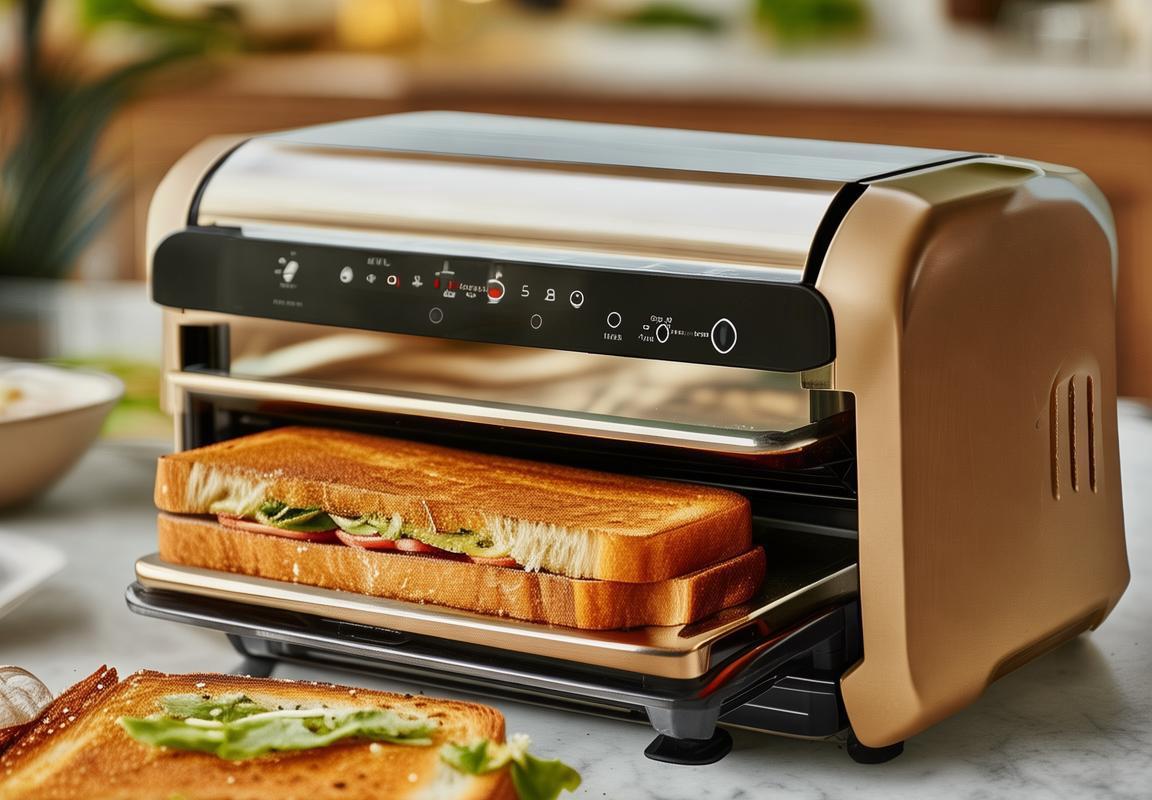
Sustainability and Eco-Friendly Options
The push for sustainability in the kitchen appliance industry is gaining momentum, and eco-friendly options are becoming more than just a trend; they’re a necessity. Consumers are increasingly aware of their carbon footprint and are seeking products that align with their environmental values. Here’s a look at how sustainability is shaping the market for eco-friendly kitchen appliances:
-
Energy Efficiency Takes Center StageConsumers are gravitating towards appliances that consume less energy, not only to reduce their utility bills but also to minimize their environmental impact. This shift is reflected in the growing popularity of Energy Star-rated appliances, which are designed to be more energy-efficient than the minimum federal standards.
-
Materials MatterThe choice of materials in kitchen appliances is a crucial factor in sustainability. Companies are now focusing on using recycled materials, reducing the use of plastics, and opting for biodegradable components. This approach not only lessens the environmental impact of production but also encourages a circular economy.
-
Smart Appliances and ConnectivityEco-conscious consumers are also drawn to smart appliances that offer energy-saving features through connectivity. Devices that can be controlled remotely, allowing users to optimize energy use and turn off appliances when not in use, are becoming increasingly popular.
-
Water ConservationIn regions where water scarcity is a concern, appliances that conserve water are highly sought after. Dual-flush toilets, low-flow showerheads, and dishwashers with efficient water usage are becoming standard features in eco-friendly kitchen appliances.
-
Packaging and DisposalThe packaging of appliances is also under scrutiny. Brands are looking to reduce their carbon footprint by using recyclable or biodegradable packaging materials. Additionally, the lifespan and recyclability of the appliances themselves are considered, with an emphasis on creating products that can be easily disassembled and recycled at the end of their life cycle.
-
Consumer Awareness and EducationAs awareness of sustainability grows, manufacturers are taking steps to educate consumers about the eco-friendly aspects of their products. Clear labeling, information cards, and online resources provide consumers with the knowledge to make informed choices.
-
Health and Safety ConsiderationsEco-friendly appliances often come with added health benefits, such as air filtration systems in refrigerators and cooktops that use non-toxic materials. Consumers are increasingly looking for appliances that not only reduce their environmental impact but also improve their indoor air quality and overall health.
-
Economic IncentivesGovernments and local authorities are introducing incentives for consumers to purchase eco-friendly appliances. These incentives can range from tax rebates to discounts on energy bills, making sustainable options more accessible and attractive to the average consumer.
-
The Role of CertificationCertification programs play a significant role in ensuring that eco-friendly appliances meet certain sustainability standards. Labels like the Blue Angel, which is awarded by the German Federal Environment Agency, give consumers confidence that the product has been thoroughly evaluated for its environmental impact.
-
The Future of Eco-Friendly AppliancesAs technology advances, we can expect to see even more innovative eco-friendly features. From appliances that use renewable energy sources to those that generate their own power through solar panels, the future of sustainable kitchen appliances looks promising.
-
The Global PerspectiveSustainability is not just a local issue; it’s a global one. Companies that operate on an international scale are recognizing the importance of eco-friendly practices and are integrating them into their global supply chains.
-
The Consumer’s Changing PreferencesUltimately, it’s the consumer’s changing preferences that drive the market for sustainable appliances. As more people seek out eco-friendly options, manufacturers are responding by offering a wider range of sustainable products that cater to diverse needs and budgets.
In conclusion, sustainability and eco-friendly options are becoming integral to the kitchen appliance market. Consumers are not just looking for appliances that work well; they’re seeking those that align with their values and contribute to a healthier planet. As these trends continue to grow, the industry is poised to see even more innovative and environmentally responsible products.
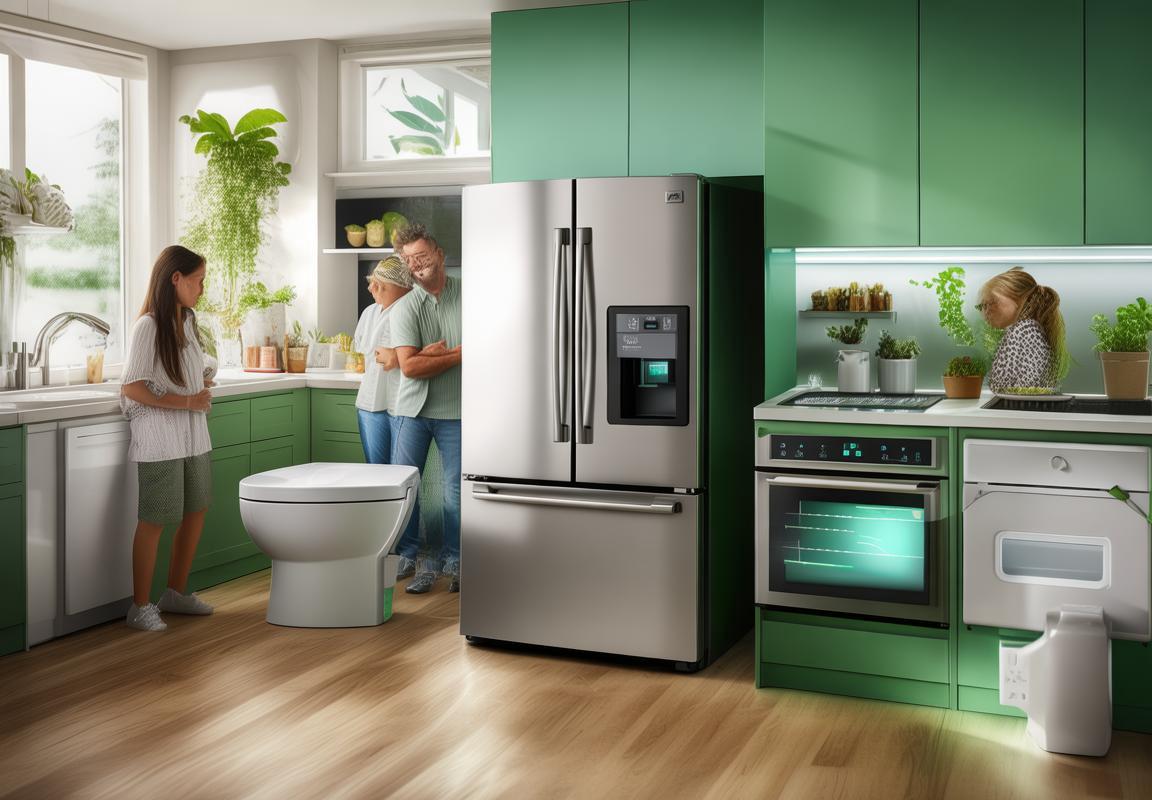
The Future of Commercial Toastie Makers
The market for commercial toastie makers is undergoing a transformative phase, driven by a combination of technological advancements, changing consumer preferences, and the rise of health-conscious eating habits. Here’s a glimpse into the potential future of this sector:
Innovative features such as programmable settings and customizable toasting levels are becoming more common, allowing businesses to cater to a wider range of preferences. These advancements not only enhance the user experience but also open up new opportunities for customization and branding.
Smart integration is another area where we’re seeing significant progress. Toastie makers that can be connected to mobile apps or kitchen management systems are gaining traction. This not only streamlines operations but also allows for real-time monitoring and predictive maintenance, reducing downtime and improving efficiency.
Health and wellness trends are shaping the future of commercial toastie makers. As consumers become more aware of the nutritional content of their food, there’s a growing demand for healthier options. This could mean the development of machines that can toast whole-grain breads or those that offer a variety of toasting options to accommodate different dietary needs.
The rise of eco-consciousness is prompting manufacturers to explore sustainable materials and energy-efficient designs. Toastie makers that are made from recycled materials or that consume less energy are likely to become more popular, not just for environmental reasons but also for cost savings.
Customization isn’t just about settings and features; it’s also about the aesthetics of the machines. As businesses look to create a unique brand identity, they’re seeking toastie makers that not only perform well but also look great on their counters. This has led to a surge in sleek, modern designs that complement contemporary kitchen aesthetics.
The retail landscape is also evolving, with more emphasis on convenience and speed. Toastie makers that can quickly toast a large number of sandwiches or that are designed for high-volume operations are becoming more sought after. This shift is driven by the need for quick service in fast-casual restaurants and cafes.
As the demand for variety increases, we might see a rise in machines that can handle different types of breads and toasting styles, from classic to gourmet. This could include options for toasting bagels, wraps, or even creating a variety of open-face sandwiches.
The integration of toastie makers into the broader foodservice industry is also a trend to watch. We could see more machines that are designed to work in tandem with other kitchen equipment, such as panini presses or sandwich makers, to create a cohesive and efficient workflow.
The future of commercial toastie makers is also tied to the global economy. As consumer spending power fluctuates, so too will the demand for these products. This means that manufacturers will need to be agile and adaptable, offering a range of products that cater to different market segments.
Finally, the role of technology in the kitchen cannot be overstated. From artificial intelligence to machine learning, we may see toastie makers that can predict demand, optimize inventory, and even suggest new menu items based on current trends. This level of sophistication could redefine what it means to be a commercial toastie maker in the years to come.